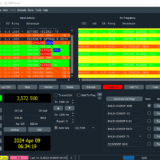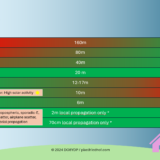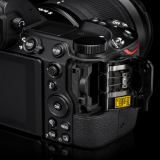Photos and videos deleted from SD card – what now?
On a trip we are asked by local authorities and military police to delete the contents of our SD cards – apparently we were filming in a security zone. In this guide we describe how we can still recover the data.
Apparently, the French military does not care if you only photograph cliffs or lighthouses, if you are in a military security zone.
Such situations are of course annoying. In the worst case, not only the photos and videos that were actually taken within the prohibited zone are lost, but also those that were taken days before. At this point at the latest it becomes clear how important backups are also during a trip.
I already wrote about mobile backup possibilities in this article.
Better to format than erase
If we are asked to delete the data, we recommend that you do not delete the memory card image by image or video by video, but format the memory card completely. This sounds violent at first, but it is more gentle on the fragile existing file system.
When formatting the memory card, only all sectors of the memory card are marked again as “released for new writing”. Nothing is deleted for the time being. It would be different if the files would be overwritten several times with random data in a “secure delete operation”. But we do not assume this.
Do not use the SD card anymore, turn off the camera
No new data should be written to the SD card after formatting or deletion. So this means that we don’t take any more new photos or videos and it is best to switch off the camera completely. Ideally, we remove the memory card from the camera and, if possible, lock it with the write-protect slider on the side of the memory card. This slider remains set during all data recovery steps that follow.
Data recovery of photos and videos
Now we need a software that is figuratively speaking, bold enough to ignore the file system structure of our SD card and still read out the sectors that are actually released for writing. This software scans the individual sectors for useful data and can then restore them on our computer.
What is mostly possible without any problems in case of photos, can become a difficult task in case of videos, as a large 4K video of course spreads over much more contiguous sectors of the storage medium than a single photo. But even for this, there is software that is specially designed for the recovery of videos.
The data recovery software “Recoverit” from Wondershare is ideally suited for the reliable recovery of photos and videos. Starting with version 8.5, this software also offers extended functions for the recovery and repair of video data. This means that if some video data has been damaged despite recovery, the software can repair it to a certain extent.
The operation is actually foolproof: Insert memory card into the computer, start Recoverit, select memory card, run scan.
To be on the safe side, I repeat once again: Make sure that your memory card with the mechanical write protection is secured against changes before you insert it into your PC for recovery. This advice is vital for sucessfully restoring data. It would be fatal if the PC would directly change, initialize or somehow overwrite the card for whatever reason.
The software then displays the recoverable videos and we can click to mark them for recovery. However, this can take quite a while, especially with large memory cards. So you should bring some time and patience.
Disclosure
I create videos for the official German Youtube channel of Recoverit. The producer of the software, Wondershare, pays me for these videos. This fact does not influence the recommendation of the software Recoverit in this article. Rather, through this cooperation I knew what to do in my specific case to be able to recover my SD card data anyway. Of course I was already convinced of the functionality and performance of the software during the creation of the product videos, but now the software itself has productively saved my photos and videos of our Bretagne trip.



